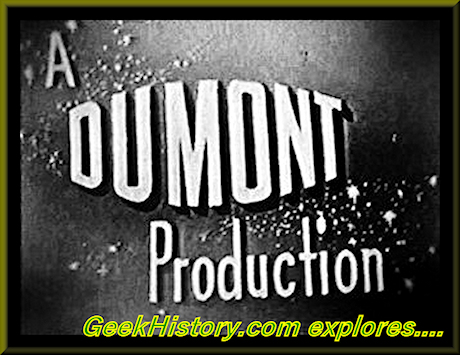
Save
There is a lot of entertainment and television broadcasting history found in the often lost and forgotten fourth television network created by scientist and inventor Allen B. DuMont.
DuMont was an American electronics engineer, scientist and inventor best known for improvements to the cathode ray tube for use in television receivers. DuMont Laboratories was the primary manufacturer of cathode-ray tubes in the United States in the 1930s and was fairly successful in the manufacturing of TV receivers.
To sell televisions, DuMont started the DuMont Television Network in 1946. The television broadcasting division of DuMont separated from the manufacturing division in 1955. The DuMont Television Network ceased operations in 1956. The DuMont consumer products manufacturing division would be purchased by Emerson Electric Company in 1958.
The DuMont Television Network had a difficult time competing for big name stars and talent of the day. The big three networks were all spin offs from radio networks which provided financial support for their television divisions. Some folks attribute the failure of the DuMont Television Network on the lack of backing from a radio network.
Growing up, like many baby boomers in the United States, I remember the big three television networks in the 1960s were NBC, ABC, and CBS. Any reference to a fourth network might make me think of PBS.
When making the statement the forgotten fourth network, some people may think that is meant to be a joke about the current fourth television network the Fox Broadcasting Company, rather than a reference to the DuMont Television Network, a functional on the air television network from 1946 to 1956.